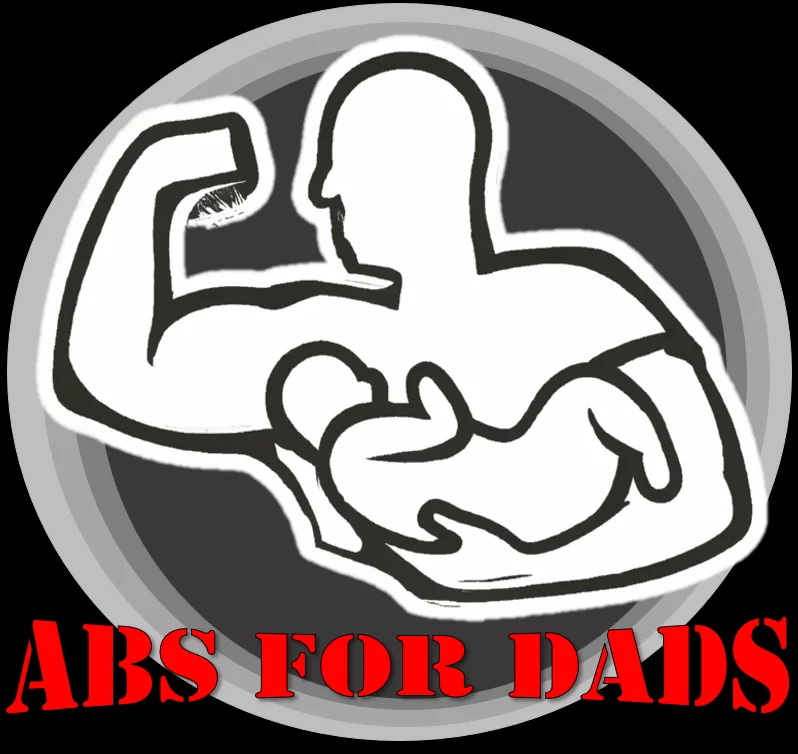THE BLOG
The Ultimate Fitness Blog for Dads
TOPICS
Welcome to Abs For Dads, your premier resource for time-efficient fitness solutions tailored for busy fathers. Discover practical tips and expert advice to transform your health and fitness, seamlessly integrating into your demanding schedule.

Fitness
Explore our curated fitness tips and routines designed to maximize efficiency for the modern dad. Whether at home or the gym, our time-sensitive workouts ensure you achieve optimal results with minimal time investment.

Nutrition
Unlock the secrets of hassle-free nutrition with our easy-to-follow meal ideas and delicious recipes. Abs For Dads empowers you to make informed food choices that align with your fitness goals, promoting vitality and strength.

Lifestyle
Enhance your overall well-being with our lifestyle hacks. From stress management to effective time optimization, our blog covers a spectrum of topics ensuring you achieve success in your fitness journey.

Lifting Heavy for Dads: Benefits, Safety, and Techniques
Navigating the world of heavy lifting can be as tricky as assembling that new piece of furniture without instructions. But don’t worry y’all, we’re here to help you determine just how many times a week you should brave the iron jungle, ensuring you're still able to leap into superhero action at a moment's notice.
The Dad Lift: Balancing Heavy Weights and Family Weights
Frequency: The Sweet Spot
In the quest for muscle gains and dad strength, hitting that workout frequency sweet spot is kind of like finding the perfect water-to-rice ratio—it's essential for optimal results. For the busy dad, engaging in heavy weightlifting sessions 2-4 times a week strikes the right balance between pushing your limits and ensuring you're not sidelined by fatigue or injury. This cadence allows you to adequately stress each major muscle group, initiating growth and strength improvements without overwhelming your body's capacity to recover. It's about working smarter, ensuring each session contributes meaningfully to your goals while leaving enough in the tank for life's other heavy lifts—like hoisting your kids into the air or tackling that mountain of yard work.
Adjusting the frequency of your heavy lifting sessions is also about listening to your body's feedback. Not all weeks are created equal; some may be loaded with late work meetings, parent-teacher conferences, or just those days when the couch's call is too strong to ignore. It's okay to dial back when life's demands peak, focusing on maintaining consistency rather than sticking rigidly to a set schedule. On the flip side, during those rare stretches when the stars align (the kids are at grandma's, and work is a breeze), you might squeeze in an extra session, capitalizing on the opportunity to push a little harder. But remember, you’re not just pushing your muscles to their limits, you’re also putting a strain on your nervous system. Fatigue that you garner from heavy lifting is a very systemic style of exhaustion that transcends muscle soreness.
Finding your frequency sweet spot is a dynamic process that requires tuning in to your body's responses and adapting to the rhythms of dad life. It's about embracing the ebb and flow of your energy and commitments, ensuring your workout routine enhances your ability to show up as the superhero dad you are. Remember, the aim is sustainable progress, not burnout. By striking the right balance, you ensure that your time in the gym fuels your adventures outside of it, making you stronger for the things that matter most.
Volume: Quality Over Quantity
In the realm of heavy lifting, especially for the chronically time-crunched dad, the adage "quality over quantity" couldn't be more applicable. The volume of your workouts—how many sets and reps you perform—isn't just a numbers game. Rather, it's about ensuring each rep counts towards building strength without overtaxing your body or your schedule. Instead of focusing on hitting a certain number of exercises or sets, concentrate on the intensity and execution of each lift. This means selecting weights that are challenging yet manageable across 3-5 sets of 4-6 reps for compound movements. Such an approach guarantees you're stimulating muscle growth and strength efficiently, fitting within those tight windows of dad time.
Moreover, prioritizing quality over quantity in your workout volume allows for a more sustainable approach to heavy lifting. It acknowledges the reality that recovery time is just as critical as the workout itself. High-quality, focused sessions reduce the risk of overtraining and injury, ensuring you're always ready for both gym time and playtime with the kids. Incorporating sufficient rest between sets—allowing for 2-3 minutes of recovery minimum when going really heavy—ensures you can maintain the intensity your muscles need for growth without dipping into the reserves you reserve for life's other heavy lifting. And don’t be afraid to go a bit longer with your rest. Remember, you’re calling upon your body to (safely and correctly) generate as much force as possible in order to move that weight. You’re not training for endurance here.
This tailored approach to workout volume also highlights the importance of strategic exercise selection. Concentrating on compound movements like squats, deadlifts, bench presses, and rows maximizes efficiency by engaging multiple muscle groups simultaneously. This strategy not only saves time but also amplifies the effectiveness of your workouts, yielding significant strength gains. By focusing on the quality of each movement, you make every second of your workout count, leading to more meaningful progress both in and out of the gym. Remember, in the balancing act of dad life, making the most of your limited workout time with high-quality, focused efforts is the key to sustaining long-term fitness and strength.
Rest & Recovery: Your Secret Weapon
When juggling fatherhood and fitness, especially when it comes to heavy lifting, rest and recovery emerge not just as beneficial, but as indispensable allies. Often overshadowed by the more visible components of workout regimes, these elements are crucial in dictating the efficacy of your training efforts. For dads lifting heavy, the mantra should be to respect the rest as much as the workout. Incorporating adequate rest days—typically 48 to 72 hours of rest between working the same muscle groups—is essential to allow for muscle repair, growth, and to prevent systemic fatigue. This recovery period is when the magic happens; muscles rebuild stronger, adapting to the stress that was applied, setting the stage for growth and strength enhancement.
Moreover, recovery isn't just about taking days off. It encompasses quality sleep, which for a busy dad can sometimes seem like a luxury, but is paramount in the heavy lifting playbook. Aim for 7-9 hours of sleep per night to optimize the recovery process, enhance growth hormone release, and reduce cortisol levels.
Acknowledging the significance of rest and recovery as integral parts of your heavy lifting routine serves as a reminder that progress isn't solely made under the weight. It’s also sculpted in the moments of rest, through the nutrients you provide your body, and the sleep that allows you to tackle each day with renewed vigor. For dads in the trenches of both parenting and heavy lifting, mastering the art of recovery is your secret weapon. It ensures longevity in your fitness journey, prevents burnout, and ultimately, makes you a stronger presence in all areas of life. Remember, the goal is to lift heavy, live fully, and recover smartly.
Nutrition: Fuel for the Dad Bod
Just as your car runs better on high-quality fuel, your body needs the right nutrients to recover from heavy lifting. Protein is your best friend, helping repair and build muscle. Combine it with a balanced intake of carbs and fats to keep your energy levels up, both in and out of the gym.
If you’ve read some of our other articles, you already know the value of eating right. Be responsible, and don’t backtrack just because you have a temporary craving. Keep your eye on the prize and earn your gains!
Systemic Fatigue: Listening to Your Body
Systemic fatigue, the shadow trailing closely behind every heavy lifter, is more than just feeling tired. It’s your body signaling that it needs rest, signaling it's time to slow down and recover. This fatigue isn't just about sore muscles; it can manifest as decreased motivation, irritability, or even a dip in performance. Ignoring these signs can push you into overtraining territory, where the risks outweigh the gains.
Listening to your body isn’t just advisable; it’s essential. Recognize when fatigue is more than just the usual post-workout tiredness. If you’re constantly drained, struggling to complete workouts that were previously manageable, or if your sleep and mood are negatively affected, these are clear indicators that your body needs a break. Adjusting your workout intensity or frequency can help mitigate systemic fatigue, ensuring your heavy lifting program contributes to your strength, not to your exhaustion.
Diminishing Returns: Knowing When to Hold 'em
There's a point in every dad’s lifting journey where more doesn't mean better—it just means more tired. If your workouts start to encroach on your ability to play with your kids or leave you too wiped to be the family MVP, it's time to reassess. Balance is key; your workouts should enhance your dad life, not detract from it.
The law of diminishing returns is a familiar concept in economics, but it applies equally to the world of fitness, especially when it comes to lifting heavy weights. There's a point at which pushing harder or lifting more frequently yields smaller gains, and can even set you back by increasing the risk of injury or burnout. There’s nothing cool about accumulated loads of joint pain if you can avoid it. For busy dads trying to balance work, family, and fitness, recognizing this threshold is crucial. It’s about finding that sweet spot where your efforts in the gym are maximized without detracting from your overall wellbeing and responsibilities outside of it.
Understanding when to hold back is as important as knowing when to push forward. If progress stalls, it might not be a sign to increase the intensity or volume, but rather to re-evaluate your routine. Are you giving your body enough time to recover? Are you varying your exercises to target different muscle groups and prevent overuse injuries? These questions can guide you in adjusting your training plan to continue making gains without falling into the trap of overtraining. Remember, in weightlifting and in life, sometimes taking a step back is what propels you forward.
Pulling It All Together
Heavy lifting is an effective way to stay in shape and keep up with the demands of fatherhood. By focusing on the right frequency, volume, and allowing for proper rest and recovery, you can avoid the pitfalls of overtraining. Remember, the goal is to be a fit dad, not just a fit dude. Adjust your lifting routine to fit your life, not the other way around. Listen to your body, prioritize nutrition, and most importantly, enjoy the journey. After all, the best part about getting stronger is how it helps you lift more than just weights—it helps you lift the spirits and hearts of those you love most.
Key Takeaways
Frequency Matters: Aim for 2-4 heavy lifting sessions a week to balance muscle growth with recovery.
Listen to Your Body: Adapt your lifting schedule based on personal energy levels and life’s demands.
Focus on Quality: Prioritize the intensity and execution of each lift over the sheer volume of exercises.
Compound Movements: Include exercises like squats and deadlifts to engage multiple muscle groups.
Rest and Recovery: Essential for muscle repair and growth; ensure 48-72 hours of rest between targeting the same muscle groups.
Sleep and Nutrition: 7-9 hours of quality sleep and a balanced diet rich in proteins, healthy fats, and carbs are crucial.
Systemic Fatigue Awareness: Recognize signs of overtraining and adjust your routine accordingly.
Diminishing Returns: Identify when increasing workout intensity or frequency may lead to smaller gains or potential setbacks.
Sustainable Progress: The goal is to enhance life as a dad, not to detract from it.
Enjoy the Journey: Heavy lifting should complement your role as a dad, making you stronger for family life.

Where Busy Dads Thrive in Health and Fitness!
Join the Abs For Dads community and redefine your health and fitness narrative. Bookmark our blog for ongoing insights. Prioritize your health without compromising your busy lifestyle – because being a fit and active dad is within reach.
Like What We're Saying? Sign Up For Our Newsletter!

Call 877-395-7147
Email:travis@absfordads.org
Site: www.absfordads.org

Abs For Dads LLC Privacy Policy


